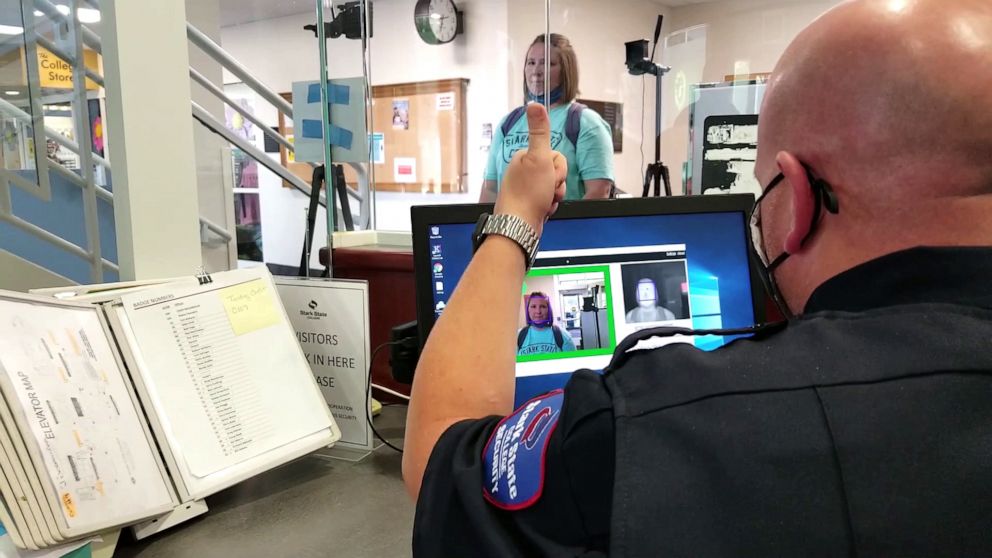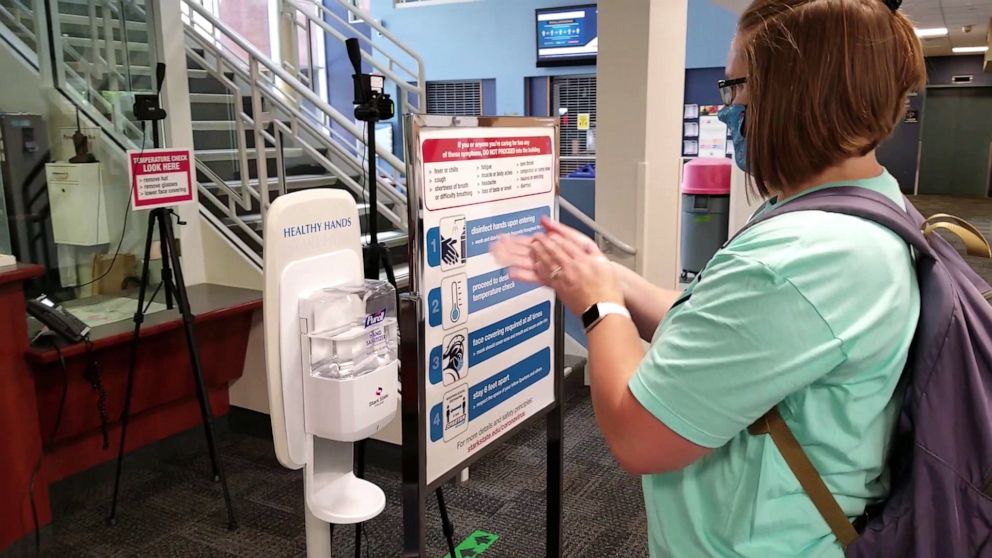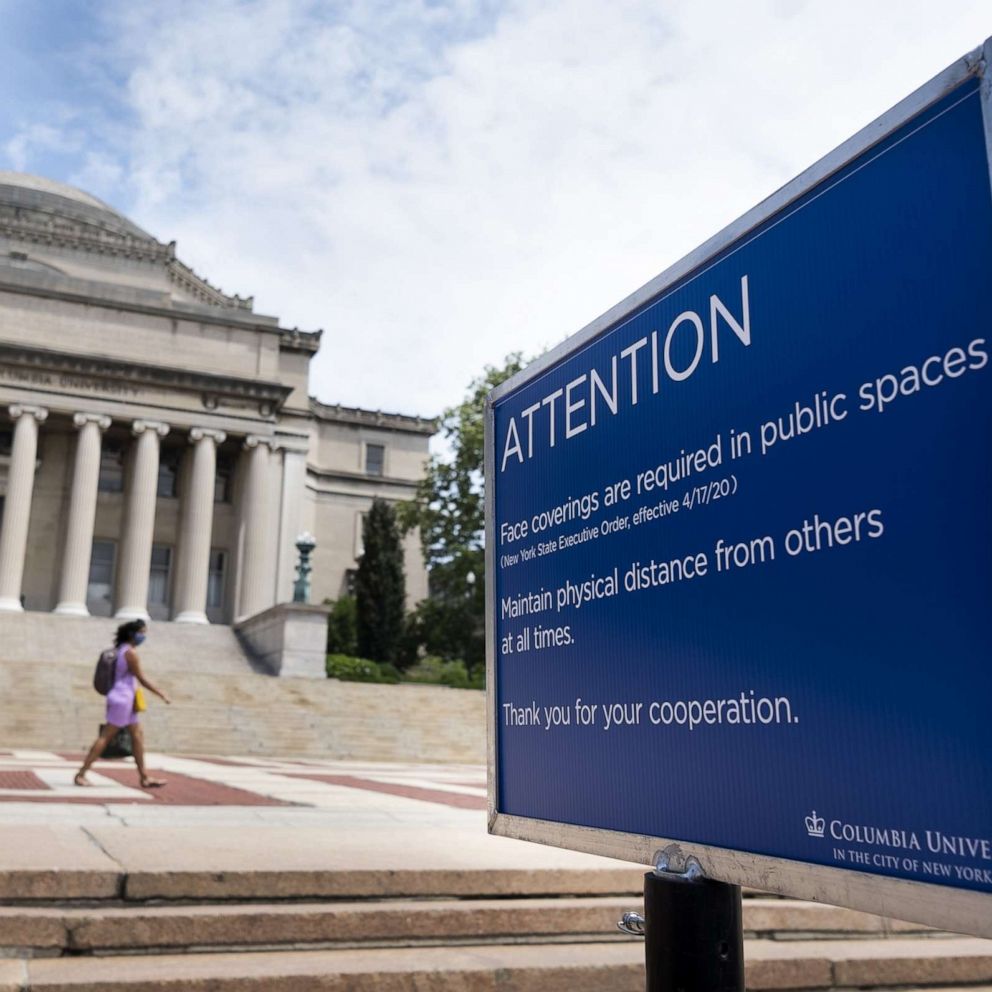How a college with zero COVID-19 cases in 3 months safely reopened
The school has prioritized classes that require hands-on learning.
A community college in Ohio has had no reported cases of COVID-19 traced to the school since reopening for in-person classes three months ago.
As of Wednesday, the school, Stark State College, said it hasn't had any confirmed cases across its multiple locations.
The news is somewhat surprising, as most college campuses have not been free of the virus this summer. A New York Times report, looking at a mix of public and private four-year universities, found that at least 6,600 confirmed cases of COVID-19 were traced to about 270 colleges during the pandemic. One notable outbreak occurred in the University of Washington's Greek Row.
Stark State, which has a main campus in Canton, has implemented a range of protocols to operate with a limited number of students and staff on campus during the pandemic. An overview of their measures and other school factors demonstrate the number of variables that go into safely reopening schools.
'A measured approach, and then some'
For Stark State, the goal has been to take "a measured approach, and then some," Marisa Rohn, vice president of advancement, human resources and partnerships at Stark State, told ABC News.
"We know we're not immune," Rohn said. "Our hope is to mitigate that and take these measured approaches that really limit that risk."
Building off safety and response protocols the school had originally created for H1N1, Stark State has also worked with the local health departments in the counties that it serves, referred to guidelines from the governor and state health department and regularly monitors CDC guidance.
"We have gone point-by-point down the governor's RestartOhio plan for higher education and ensured that we meet, or in most cases exceed, those guidelines for return to the classroom protocols," Rohn said.
For instance, temperature scans -- which the state guidelines do not list as a requirement for returning students -- are conducted at all entrances. The school has also required that anyone on campus wear a facial covering since it reopened for in-person learning in early May. (The initial state guidance recommended students wear masks, and last month it became a statewide mandate.) The school also regularly cleans its air filtration systems, a protocol that is not listed among the state guidelines.

Social distancing and sanitization
The summer semester features a smaller on-campus population in general, with about 80% of students online already, Rohn said. For in-person classes, the school has prioritized classes that require hands-on learning, including commercial drivers license, automotive and health care programs. A little more than 750 students have been to school in person this summer across two campuses and automotive and commercial drivers license locations.
The school has deployed several measures to promote social distancing. There are fewer entrances, to better manage foot traffic as well as conduct health screenings. Class times are staggered throughout the day to limit the arrival and departure of students and at any given time. Class sizes have ranged from 10 to 12 students, with an even smaller number in the commercial drivers license program. (Training in the truck went from a student-instructor ratio of 4:1 to 1:1.)
In common areas and computer labs, seating is roped or marked off to enable a six-foot distance. The cafeteria capacity was cut in half.
The school has also ramped up sanitizing protocols. Hand sanitizing stations are located at all entrances and throughout the campuses. Classrooms are sanitized after each use, including door handles, counters and tables and students are provided cleaning wipes.

Signage at each entrance gives a rundown of the school's safety protocols, as well as a list of COVID-19 symptoms. If someone forgets a mask, there is a supply of facial coverings available, and they are for sale in the bookstore. Should someone become sick, the school will isolate them in a designated area until they can be brought to a clinic or hospital.
Social distancing and sanitizing measures also apply to the school's employees: Faculty and staff rotate on-campus shifts, plexiglass separators have been installed in offices and cleaning supplies are accessible to all.
Protocols in place
Stark State has established protocols should a student or staff member test positive for COVID-19, is notified of exposure or needs to be tested. The school would collaborate with the health department in the county in which the person resides, which would conduct contact tracing and advise the school on quarantining.
So far, the school has had a few reported exposures of staff members off campus who were asked to self-quarantine and monitor symptoms, Rohn said. Should it be notified by a county health department of any confirmed cases linked to its campuses, the school has to notify the public on its website.
"We are prepared, we have our protocols in place," Rohn said. "For us, it's that balancing act. We really need to keep our teaching and learning mission in the forefront, but we also need to keep people safe."
Monitoring community spread
The Ohio health department monitors COVID-19 spread using a four-level system based on seven different indicators -- such as new cases, hospital admissions and ICU bed occupancy -- that's updated weekly for each county. The counties that Stark State's campuses are in -- Stark and Summit -- are both in the second level, meaning there's increased exposure and spread and residents should exercise a "high degree of caution." In one indicator, Stark has just above 50 new confirmed cases of COVID-19 per 100,000 residents, while Summit has 75. The counties surrounding Stark and Summit are in the first, second or third levels.
Low community spread is key in reopening schools, health experts say.
"If you don't have a lot of community spread, then the chances are it's less likely that you're going to be seeing a lot of cases in the schools," said Dr. Simone Wildes, an infectious diseases physician at South Shore Health in southeastern Massachusetts and an ABC News contributor.
The fact that a majority of the college's enrollees are part-time -- about 72% -- may also help with a staggered schedule of students on campus.
The community college also doesn't have dorms or athletics: two key concerns with reopening colleges.
"You don't have people in the dorms, people in close quarters -- that's something they have going in their favor," Wildes said.
Stark State's fall semester starts Aug. 31, at which point it's expected about a third of students will be fully online, a third will be fully in-person and a third will be doing a hybrid, officials said. Annually, the school typically serves around 15,000 students.
Having more people on campus this fall will put their new protocols to the test.
"On a small scale, I think most people are able to manage things very well," Wildes said. "But as we expand the numbers, then things get a lot harder to control."
What to know about the coronavirus:
- How it started and how to protect yourself: Coronavirus explained
- What to do if you have symptoms: Coronavirus symptoms
- Tracking the spread in the U.S. and worldwide: Coronavirus map
Tune into ABC at 1 p.m. ET and ABC News Live at 4 p.m. ET every weekday for special coverage of the novel coronavirus with the full ABC News team, including the latest news, context and analysis.






